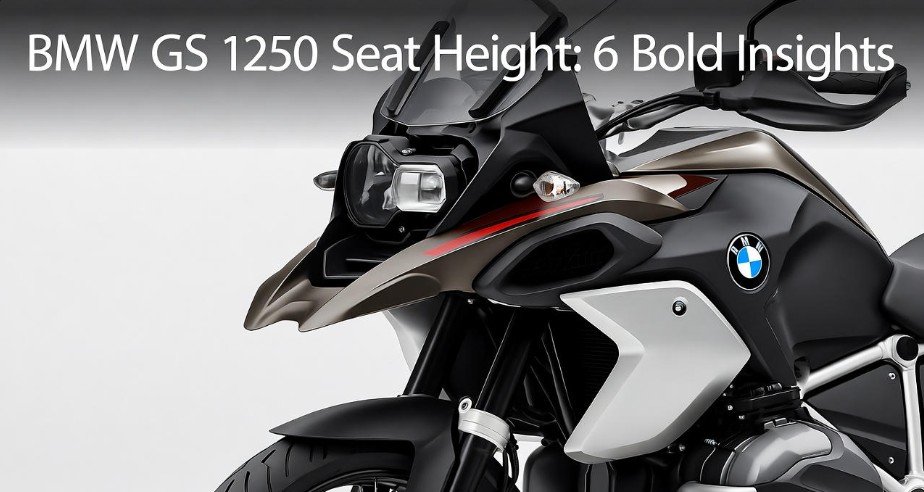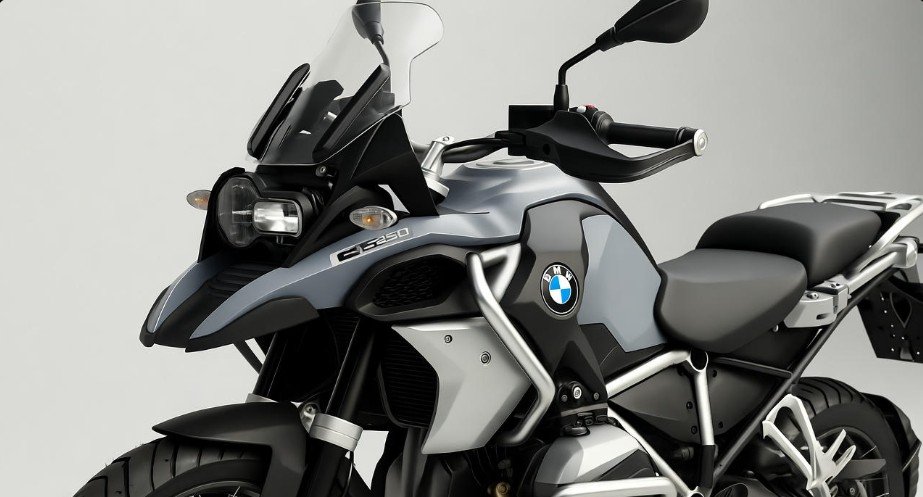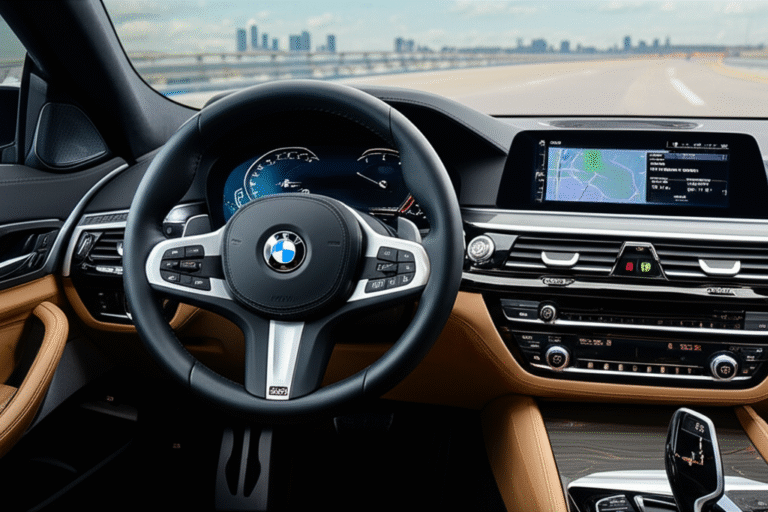BMW GS 1250 Seat Height: 6 Bold Insights

The BMW GS 1250 seat height is a crucial factor for rider comfort and confidence. Understanding its adjustability and impact ensures a stable and enjoyable riding experience, whether you’re navigating city streets or tackling off-road adventures across the USA.
Key Takeaways
- Adjust BMW GS 1250 seat height for optimal reach.
- Explore the factory seat options available.
- Learn how to perform seat height adjustments.
- Consider aftermarket solutions for personalized fit.
- Understand the impact of tire and suspension changes.
- Assess your riding style and terrain needs.
When you’re eyeing the iconic BMW GS 1250, one of the first things that might come to mind is how you’ll connect with this capable adventure machine. Your seat height is more than just a number; it’s your primary point of contact with the bike. It dictates your balance, your control, and your confidence on every ride, from a quick trip to your local coffee shop in Los Angeles to an epic cross-country journey through the Rockies. Many riders, especially those new to adventure bikes or particular about their fit, wonder about the BMW GS 1250 seat height. It’s a common concern, and for good reason. Getting this right makes a world of difference. This guide will walk you through everything you need to know, ensuring you feel perfectly planted on your GS 1250, no matter your stature. Let’s dive into six bold insights that will clarify the BMW GS 1250 seat height for you.
Understanding BMW GS 1250 Seat Height Basics

The BMW R 1250 GS, a true icon in the adventure touring segment, is renowned for its versatility and capability. However, like many high-performance motorcycles, its standard seat height can be a point of consideration for riders of varying inseams. BMW understands this, and the GS 1250 offers a degree of adjustability right from the factory. The standard seat height for the BMW R 1250 GS typically sits around 850 mm (33.5 inches) in its highest position. For riders who find this a bit too tall, there’s often a lower setting available, bringing the seat down to approximately 830 mm (32.7 inches). This difference, while seemingly small, can be significant for riders needing to firmly plant both feet on the ground when stopped.
The ability to adjust your seat height is fundamental for rider confidence and safety. When you can comfortably reach the ground, you have better control at low speeds, during parking maneuvers, and when navigating uneven terrain. This is particularly important in the diverse riding environments found across the USA, from bustling urban centers with curb stops to remote trails where footing is critical. The difference in seat height between the two standard positions is achieved through a simple mechanism, usually involving repositioning the seat onto a different set of mounting points or by flipping a part of the seat assembly. Taking the time to understand and utilize this feature is the first step toward a personalized riding experience on your GS 1250. Now, let’s explore how you can actually make these adjustments.
Insight 1: The Two-Tier Factory Seat Adjustment
One of the most practical features of the BMW R 1250 GS is its built-in, two-stage seat height adjustment. This is not a complex modification; it’s a user-friendly feature designed for the everyday rider. Most R 1250 GS models come equipped with a seat that can be set in at least two different positions. The process is generally straightforward and can be performed without any special tools, making it accessible for any owner. This allows you to fine-tune your connection to the motorcycle to suit your comfort and confidence levels.
The standard seat on the R 1250 GS is typically a two-piece unit or has a mechanism allowing for two height settings. The higher setting is usually the default, providing a commanding view and ample legroom for taller riders. To lower the seat, you’ll typically need to remove the seat itself. This might involve releasing a latch or removing a bolt or two, depending on the specific model year and sub-model of your GS 1250. Once the seat is off, you’ll look for a specific mounting point or a lever/clip system that allows you to reposition the seat to its lower setting. This might involve flipping a bracket or moving the seat onto a different set of pegs on the motorcycle’s subframe. Consulting your owner’s manual is always recommended for the precise steps for your particular bike.
Here’s a general breakdown of how this adjustment is typically made. Remember, always refer to your specific BMW R 1250 GS owner’s manual for exact instructions.
| Step | Action | Notes |
|---|---|---|
| 1 | Locate Seat Release Mechanism | This is usually under the rear of the seat, often accessible after lifting the rider’s seat. It might be a key-operated lock or a simple cable release. |
| 2 | Remove Rider Seat | Once released, lift and remove the rider’s seat. |
| 3 | Identify Adjustment Points | On the seat base or the motorcycle frame, look for distinct mounting holes or a bracket with multiple positions. |
| 4 | Reposition Seat/Bracket | For the lower setting, you might flip a bracket on the seat or place the seat onto lower mounting pegs. |
| 5 | Reinstall Seat | Place the seat back onto the adjusted mounting points and secure it using the release mechanism or bolts. |
This simple adjustment can effectively lower the BMW GS 1250 seat height by about 20 mm (roughly 0.8 inches), making a noticeable difference for many riders. It’s a testament to BMW’s attention to rider ergonomics and the desire to make this incredible machine accessible to a wider range of enthusiasts across the USA.
Insight 2: Standard Seat Options and Variations
Beyond the adjustable factory seat, BMW offers various other seat options for the R 1250 GS, catering to different needs and preferences. These often come as genuine BMW Motorrad accessories or are available through specialized aftermarket manufacturers. Understanding these options can significantly impact your comfort and the perceived BMW GS 1250 seat height.
Official BMW Motorrad Accessories:
- Comfort Seat: Often slightly taller than the standard seat, this option provides increased cushioning and a modified shape for enhanced long-distance comfort. It might add a centimeter or two to the overall height.
- Rallye Seat: This seat is typically designed for more aggressive, off-road-oriented riding. It’s often narrower and can be slightly lower than the standard seat, promoting better rider mobility.
- Lower Seat: BMW also offers a factory-designed “Low Seat” option. This is a direct replacement for your standard seat and is specifically engineered to reduce the seat height by a predetermined amount, often around 30-40 mm below the standard high setting. This is a popular choice for riders who need a more substantial reduction in seat height.
- High Seat: Conversely, for taller riders or those who prefer a more upright riding position with more legroom, a factory “High Seat” might be available, increasing the overall seat height.
The exact specifications and availability of these seats can vary by model year and region. It’s always best to check with your local BMW Motorrad dealer or consult the official BMW Motorrad accessories catalog, which is readily available online and provides detailed specifications for each component. These official options ensure compatibility and maintain the aesthetic and quality standards you expect from BMW.
| Seat Type | Approximate Height Change (vs. Standard Low) | Primary Benefit | Ideal Rider |
|---|---|---|---|
| Standard Seat (Low Setting) | Baseline | Balanced compromise | Average height riders |
| Standard Seat (High Setting) | +20 mm (+0.8 in) | More legroom, commanding view | Taller riders |
| BMW Low Seat | -30 to -40 mm (-1.2 to -1.6 in) | Maximum ground reach | Shorter riders, new riders |
| BMW Comfort Seat | +10 to +20 mm (+0.4 to +0.8 in) | Enhanced comfort on long rides | Touring riders, all heights |
| BMW Rallye Seat | -10 to -20 mm (-0.4 to -0.8 in) | Off-road control, agility | Aggressive/off-road focused riders |
When considering these options, it’s essential to think about your primary riding style and the terrain you’ll encounter most often. A rider planning extensive off-road excursions in the American Southwest might prioritize the Rallye seat’s ergonomics, while someone planning a cross-country tour might opt for the Comfort Seat. The Low Seat remains a pivotal option for those prioritizing secure footing above all else.
Insight 3: Aftermarket Seat Solutions for Perfect Fit
While genuine BMW seats cover a good range, the aftermarket is where you’ll find an even more expansive array of solutions for dialing in the perfect BMW GS 1250 seat height. Manufacturers specializing in motorcycle seats understand that rider fit is paramount, and they offer innovative designs that go beyond simple height adjustments.
Leading Aftermarket Seat Manufacturers:
- Sargent World Sport Seats: Known for their high-quality construction and ergonomic design, Sargent offers seats that can be lower, standard, or taller than stock, often with enhanced comfort features like their proprietary foam technology.
- Touratech: A giant in the adventure motorcycle world, Touratech provides a range of seats designed for rugged use. Their seats often focus on durability and rider control, with options that can adjust the BMW GS 1250 seat height and offer superior grip.
- Seat Concepts: This company focuses on providing seats with improved comfort and rider support through custom foam densities and shapes. While not always explicitly about just lowering the bike, their designs can sometimes offer a slightly lower profile due to their internal construction.
- Renazco Racing: Renazco is famous for its custom-built seats. You can specify your exact height, inseam, and riding preferences, and they will build a seat tailored precisely to you. This is the ultimate in personalization for BMW GS 1250 seat height and comfort.
These aftermarket seats often feature different foam densities, contoured shapes for better weight distribution, and even advanced materials for temperature regulation. Some offer specific “low” versions that can significantly reduce the seat height, sometimes even more than the factory low seat. When choosing an aftermarket seat, consider not only the height but also the width. A wider seat can distribute your weight more comfortably, but it might also make the bike feel wider between your legs, potentially affecting your ability to reach the ground. Conversely, a narrower seat can make it feel easier to get your feet down, even if the measured height is similar.
When exploring aftermarket options, manufacturers usually provide clear specifications regarding the seat’s height relative to the stock seat. Many will even offer different profiles or shapes within their “low” options. Always check reviews and consider your specific inseam and riding style. The investment in a well-fitted aftermarket seat can transform your riding experience, especially for those long hauls across America’s diverse landscapes.
Insight 4: Beyond the Seat: Tire and Suspension Impact
While focusing on the seat itself is crucial, it’s important to remember that the BMW GS 1250 seat height isn’t determined solely by the seat component. Changes to your motorcycle’s tires and suspension system can also significantly alter how high your feet are from the ground. This is a vital consideration for riders aiming for optimal ground clearance and a confident stance.
Tire Size: The overall diameter of your tires directly influences your bike’s ride height.
- Larger Diameter Tires: Installing tires with a larger overall diameter than stock will effectively raise the entire motorcycle, including the seat height, by a small amount. This can increase ground clearance, which is beneficial for off-road riding, but it will make the bike feel taller.
- Smaller Diameter Tires: Conversely, using tires with a smaller diameter will lower the bike. While this can improve ground reach, it also reduces ground clearance and can alter the bike’s handling characteristics and speedometer accuracy.
It’s generally recommended to stick to tire sizes that are within BMW’s specified range for the R 1250 GS to avoid unintended consequences on handling and safety. For example, many riders opt for slightly taller, more aggressive adventure tires, which can add a small amount to the bike’s effective seat height. You can find tire size information in your owner’s manual or on official BMW Motorrad resources.
Suspension Modifications: The motorcycle’s suspension system plays a critical role in its ride height and how it responds to your weight.
- Suspension Lowering Kits: For riders who need to lower the bike more substantially than what a low seat can provide, suspension lowering kits are available. These kits typically involve shorter springs and/or modified linkages that reduce the bike’s overall ride height. This will naturally lower the seat height. However, lowering the suspension reduces ground clearance and suspension travel, which can compromise off-road capability and may lead to bottoming out on rough terrain. Companies like Koubalink offer such solutions for BMW motorcycles, including the GS series.
- Suspension Sag Adjustment: The ‘sag’ is the amount the suspension compresses under the rider’s weight. Adjusting the preload on your shocks can alter how much sag occurs. Increasing preload will reduce sag and make the bike sit slightly higher when you’re on it, while decreasing preload will allow more sag, making it feel lower. This is a fine-tuning adjustment rather than a radical change.
When considering suspension modifications, it’s essential to consult with reputable suspension specialists or reputable aftermarket providers like those mentioned above. They can advise on the best course of action to achieve your desired BMW GS 1250 seat height while maintaining acceptable safety and handling characteristics for riding on American roads and trails.
Insight 5: Evaluating Your Personal Riding Needs and Style
The “right” BMW GS 1250 seat height is highly personal. It depends on your physical attributes, your confidence level, and how you intend to use your motorcycle. What works perfectly for one rider might be entirely unsuitable for another. Taking a moment to honestly assess your needs is a crucial step before making any modifications or selecting a new seat.
Consider your inseam: This is the most direct physical measurement. A rider with a 34-inch inseam will naturally be more comfortable with a taller seat than someone with a 29-inch inseam. You should aim to be able to place the balls of both feet firmly on the ground when stopped. While some experienced riders are comfortable with only one foot down or even tip-toeing, for beginners or those who prioritize stability, full footing is ideal. You can easily measure your inseam at home with a tape measure.
Riding environment:
- Urban Commuting: Frequent stops at traffic lights, navigating crowded streets, and parking in tight spots all benefit from a lower, more manageable seat height. You’ll appreciate being able to put both feet down easily.
- Solo Touring: Long distances on highways and open roads are more about comfort. While ground reach is still important, seat padding and ergonomics might take precedence.
- Off-Road Adventure: For tackling trails, gravel roads, and challenging terrain, a lower center of gravity and assured footing at slow speeds are critical. You might also benefit from a seat that allows for more body movement, like the Rallye seat.
Confidence Level: If you’re new to adventure bikes or motorcycling in general, having your feet planted firmly on the ground will significantly boost your confidence. It reduces the anxiety of potential tip-overs and allows you to focus on learning the nuances of riding the GS 1250. Conversely, if you’re an experienced rider on your third or fourth GS, you might already be accustomed to the bike’s feel and may not need the lowest possible seat height.
Riding Style: Do you ride primarily on paved roads, or do you venture off-road frequently? Your riding style will dictate whether you prioritize comfort, agility, or a lower stance. For instance, a rider who plans to ride their R 1250 GS on the Pan-American Highway will have different needs than someone planning to explore the trails of Moab, Utah. Understanding these personal factors will guide you toward the most suitable solution for your BMW GS 1250 seat height.
Insight 6: The “Sit Test” and Professional Advice
Before committing to any modifications or purchasing a new seat, the most crucial step is to perform a “sit test.” This involves actually sitting on the motorcycle to gauge the BMW GS 1250 seat height and how it feels to you. This is something you can do at a BMW Motorrad dealership or even with friends who own an R 1250 GS.
How to Perform a Sit Test:
- Mount the Bike: Get on the motorcycle as you normally would, ensuring you are seated naturally.
- Foot Placement: Place both feet on the ground. Assess how much of your foot is making contact. Can you comfortably place the balls of your feet down? Is there firm contact with both feet, or are you on your tiptoes?
- Balance and Control: While seated, try to gently rock the bike. Does it feel stable? Can you comfortably balance it without feeling like you’re going to tip over?
- Ergonomics: Check your posture. Are your knees comfortably bent? Can you reach the handlebars and controls without straining?
Even if you can’t find an R 1250 GS with the specific seat height adjustment you’re considering, sitting on different GS models or even similar adventure bikes at a dealership can give you a general feel for different seat heights and shapes. Pay attention to how wide the bike feels between your legs when seated; this often impacts perceived ground reach more than the actual seat height measurement.
Seeking Professional Advice: Don’t hesitate to consult with experts.
- BMW Motorrad Dealerships: The sales staff and service advisors at your local BMW dealer are invaluable resources. They can explain the different seat options available for the R 1250 GS, discuss factory-approved modifications, and often have loaner bikes or demo models that allow for a sit test. They are familiar with the specifications of various BMW motorcycle models and accessories.
- Professional Motorcycle Suspension Tuners: If you’re considering suspension modifications for ride height adjustment, consult with a reputable suspension specialist. Reputable shops in the USA, like Öhlins dealers or independent BMW specialists, can offer expert guidance on how to modify your suspension safely and effectively.
- Experienced Riders & Forums: Online forums dedicated to BMW motorcycles and adventure riding (such as ADVrider.com, a prominent community for US riders) are treasure troves of information. You can read about other riders’ experiences with various seat options and modifications for the R 1250 GS. Many experienced riders are happy to share their insights on finding the perfect BMW GS 1250 seat height.
Ultimately, the “best” BMW GS 1250 seat height is the one that makes you feel most confident, comfortable, and in control. Combining the sit test with the knowledge gained from professional advice and research will lead you to the ideal solution.
Frequently Asked Questions (FAQ)
Q1: What is the standard seat height of a BMW R 1250 GS?
The standard seat height of the BMW R 1250 GS typically ranges from approximately 830 mm (32.7 inches) to 850 mm (33.5 inches), depending on the chosen setting. Refer to your owner’s manual for the exact specifications for your model year.
Q2: How can I lower my BMW R 1250 GS seat height without buying a new seat?
Most BMW R 1250 GS models allow for a simple, two-stage seat height adjustment by repositioning the rider’s seat on the motorcycle’s subframe. This can lower the seat by about 20 mm and is usually achievable without special tools.
Q3: Are there factory-lowered seats available for the BMW R 1250 GS?
Yes, BMW Motorrad offers an official “Low Seat” accessory for the R 1250 GS. This seat is designed to reduce the overall seat height compared to the standard adjustable seat, typically by around 30-40 mm below the standard low setting.
Q4: Can changing tires affect the BMW R 1250 GS seat height?
Yes, changing tire sizes can affect the overall ride height of the motorcycle. Tires with a larger diameter will slightly increase the seat height, while smaller diameter tires will lower it. It’s important to stay within the recommended tire sizes for your R 1250 GS to maintain safe handling and performance.
Q5: Is it safe to lower the suspension on my BMW R 1250 GS?
Lowering the suspension will reduce ground clearance and suspension travel, which can impact off-road capability and may increase the risk of bottoming out. While aftermarket kits exist, it’s crucial to consult with a suspension specialist to understand the implications and ensure the modification is done safely and correctly for your intended use.
Q6: How do I know if my BMW R 1250 GS seat height is correct for me?
The ideal seat height allows you to place the balls of both feet firmly on the ground when stopped. You should feel stable and in control, with your knees comfortably bent. Performing a “sit test” at a dealership or on your own bike is the best way to assess this.
Q7: What are the benefits of a lower seat height on a BMW R 1250 GS?
A lower seat height provides increased confidence at low speeds and during stops, improved stability when maneuvering in tight spaces, and easier ground contact, which is particularly beneficial for shorter riders or those new to adventure bikes.
Conclusion
The BMW R 1250 GS is an exceptional motorcycle, capable of taking you on adventures across the diverse landscapes of the USA and beyond. Understanding and optimizing your BMW GS 1250 seat height is a fundamental step in ensuring you can fully enjoy its capabilities with confidence and comfort. From utilizing the built-in factory adjustments to exploring a wide range of official and aftermarket seat options, and even considering the subtle impacts of tires and suspension, there are numerous ways to tailor the bike to your physical needs and riding style. Remember to always prioritize safety, perform thorough research, and, most importantly, conduct a sit test to ensure your connection to the machine is perfect. With the right setup, your R 1250 GS will be an extension of yourself, ready for any journey you can imagine.



